I have written before about the ULTIMATE gift for a priest: the marvelous portable altars by St. Joseph’s Apprentice. In 2014 HERE and in 2015 HERE
With each iteration, these altars are being perfected. He has taken some of my past suggestions and incorporated into the design.
St. Joseph’s Apprentice sent me an altar for my 25th anniversary (which was 26 May).
Let’s unbox it!
First, it was well-protected in the shipping box, but that part – important as it is – is boring.
It has a protective case and suitcase handle.
Beautiful glossy finish.
The underside is smooth and it won’t scratch any surface. There are brass fittings to protect the corners, but they are raised from the bottom and there is a felt pad.
The cover lifts up, that’s the vertical part. Wings fold out. There is an altar stone set into the hinged lid that opens to reveal in the inner compartment.
This is what he carved on the underside of the cover to the central, inner compartment.
There are two brass bars which you push outward from the inner compartment to act as supports to the side wings.
Fit these two pieces together: book stand.
Inside the bag was the crucifix for the summit of the top lid. You can see the tongue that fits into a groove on the top of the lid, to keep it in place.
Beautifully packaged altar cloths, including a vesperale.
A proper Roman altar has three altar cloths.
Set up with two little votive candles, a set of the travel altar cards from SPORCH. A Missale Romanum which I bought through the FSSP.
With the vesperale.
It came with nice altar cards, which were described as being from a priest who was a Franciscan of the Immaculate who is now, after the persecution began, trying to eke out a living. They are a little too flexible to stand up straight in the grooves, but they could easily be reinforced or given an extra stability by an additional lamination.
The altar, when opened, is 36″ wide and it weighs only 17 lbs!
The maker, Joseph’s Apprentice, Rick Murphey, said that this is of the same quality that all his other altars are. If there are any problems or defects, he will remedy them. He also wrote:
“Pray for me and for benefactors for those priests who are not able to afford one. We are keeping you in our prayers during these troubling times and ask that you remember us too”
Outstanding, all the way around.
Keep this in mind for your priest’s, for their ordinations and their anniversaries.
St. Joseph’s Apprentice.

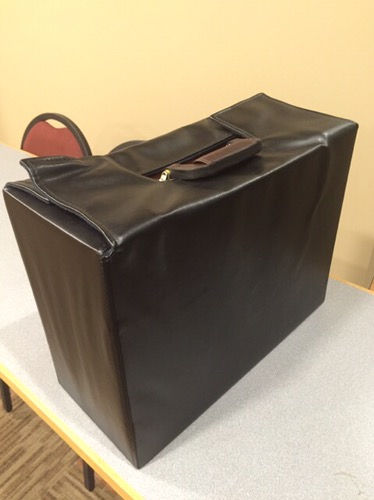

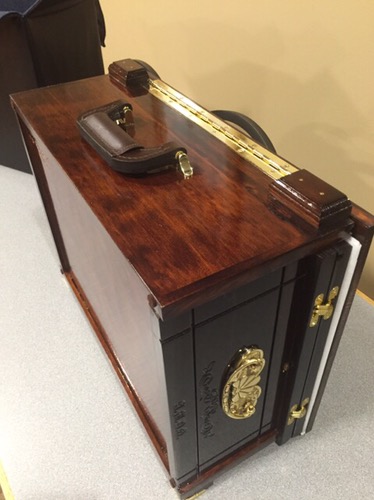
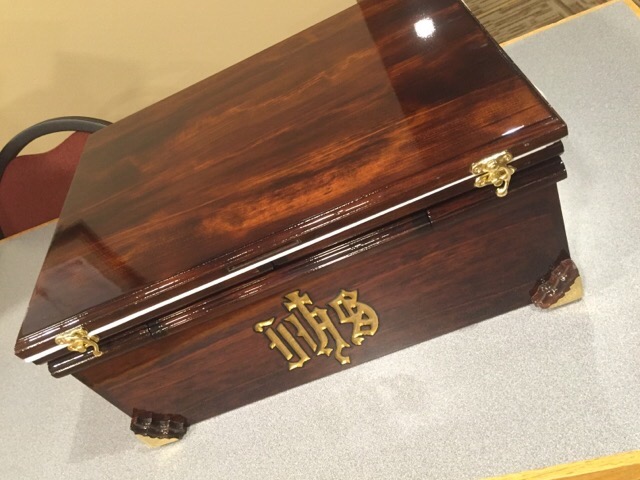


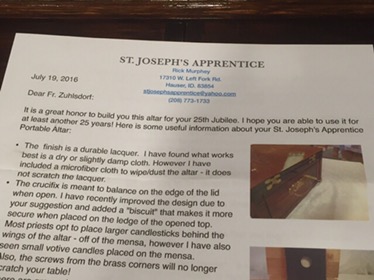
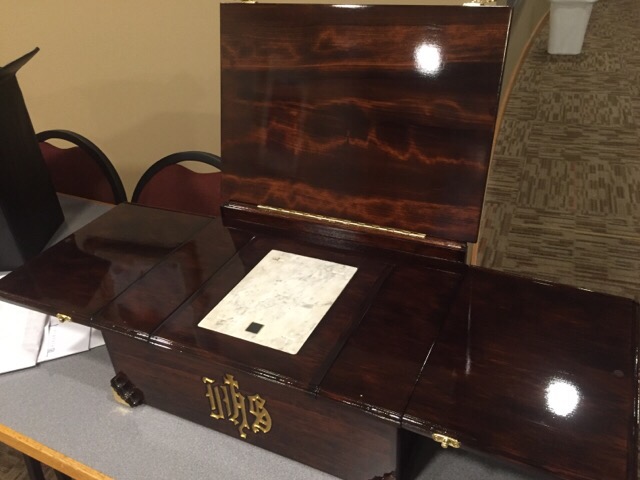
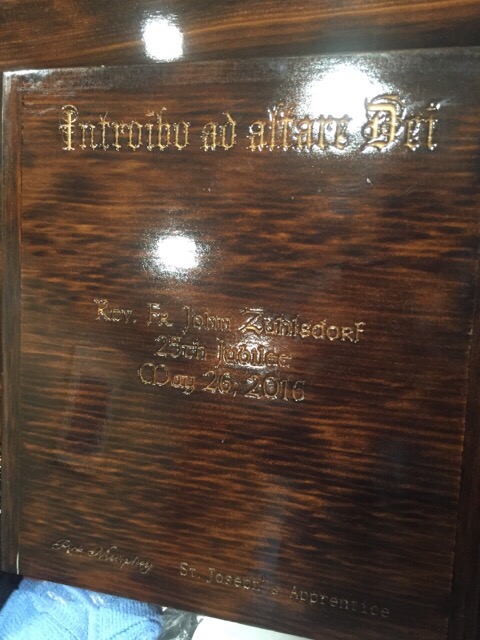
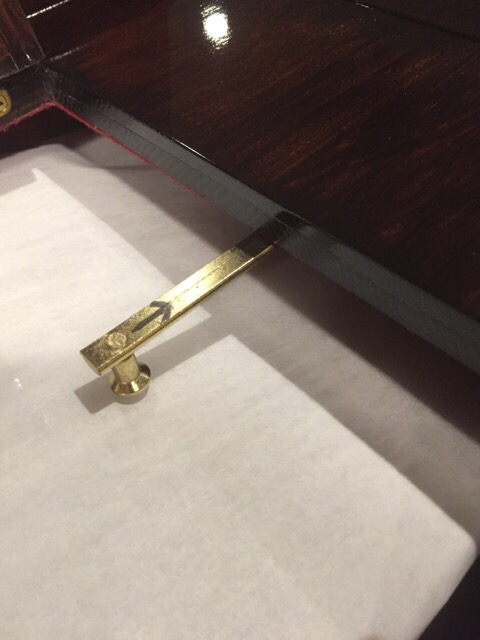
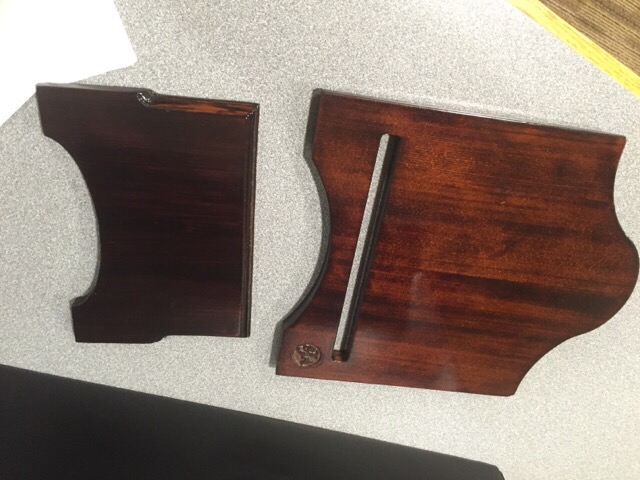
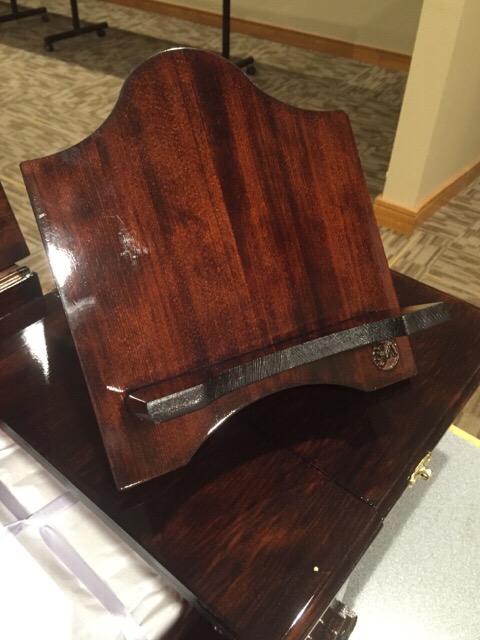
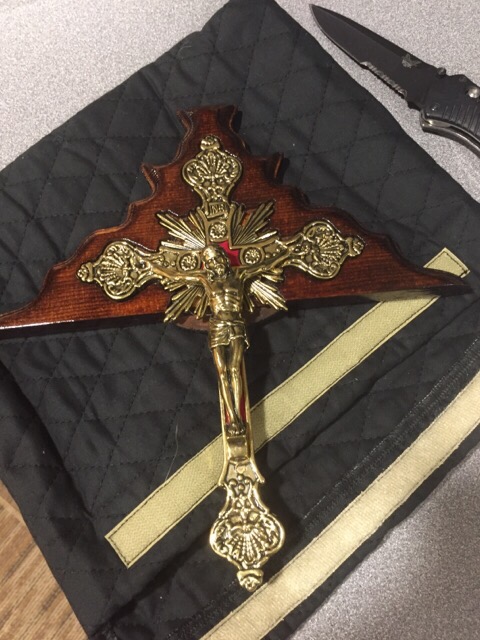

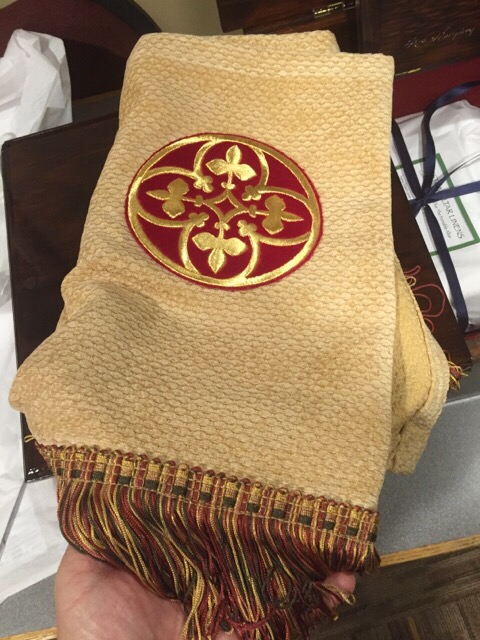

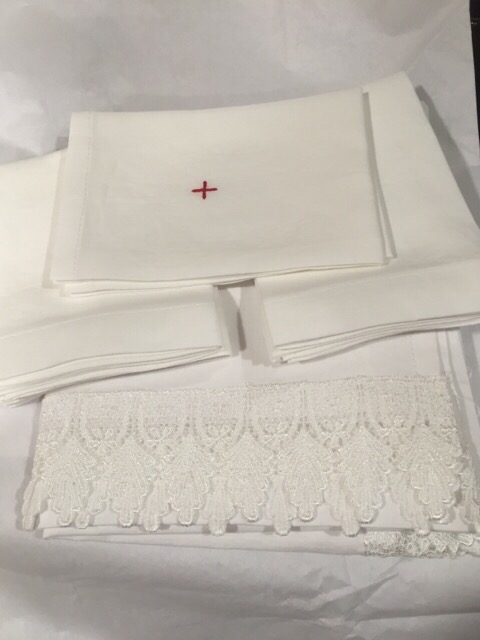
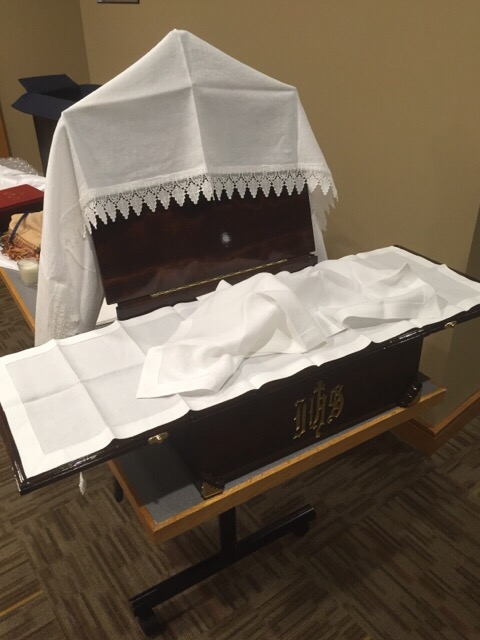
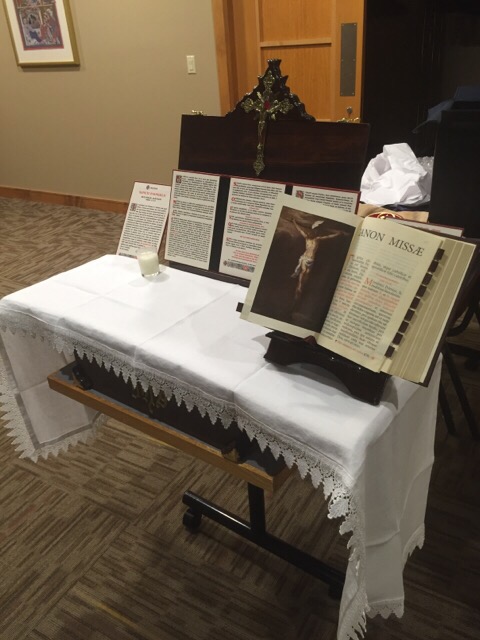
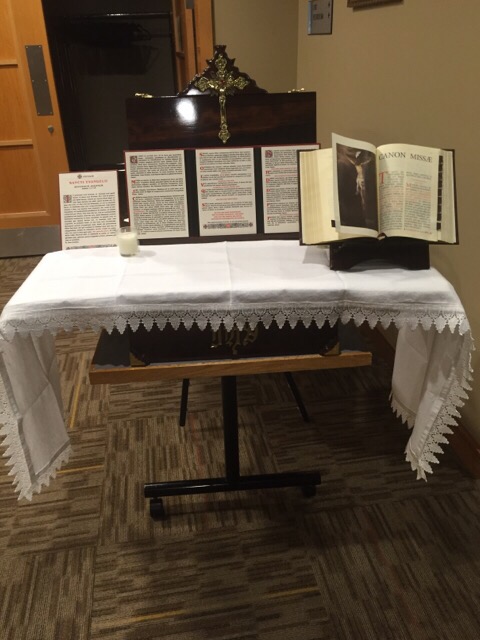
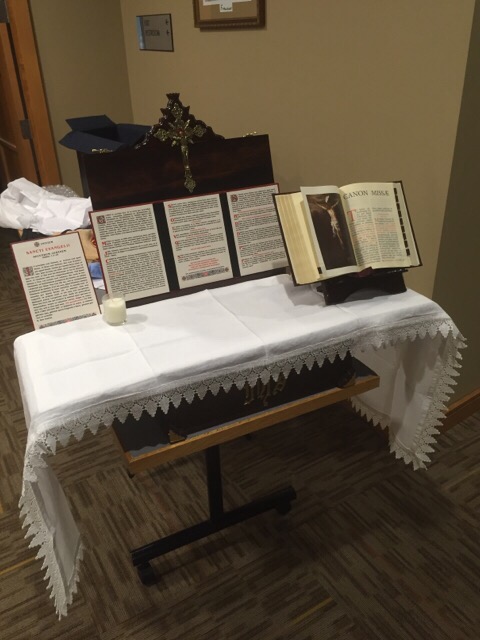
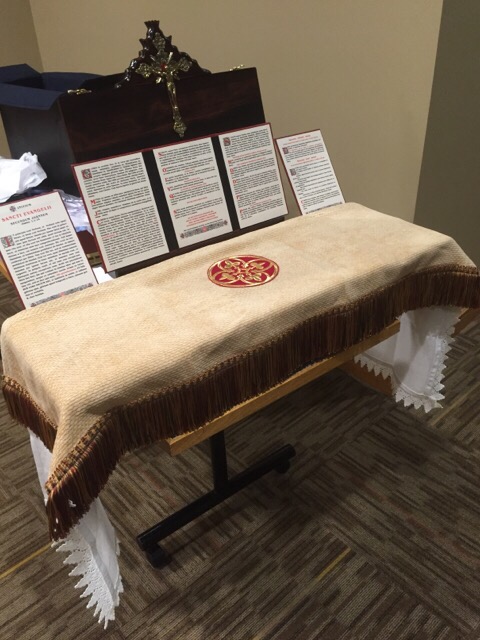


































There are times one wishes one had resources. How I would love to be able to gift these to any priest who would like one. These are simply beautiful. What a noble vocation, to make something so lovely for such a purpose, or to add to it by making wonderful altar cards.
Kathleen, your prayers and rosaries and the little cumulative things you do without even a thought are worth more than gold or silver.
Kathleen I agree with you. One can tell that the altar was made with love.
Beautiful! Keep it safe, Father. In the not too distant future you’ll be needing it when the faithful remnant is forced underground.
What a beauty!
I looked up “Altar Stone” on Wikipedia to learn more about it and was surprised by this:
“The tabletop of the altar, the “mensa”, had to be of a single piece of natural stone (almost always marble). Its supports had to be attached to the mensa. If contact was later broken even only momentarily (for instance, if the top was lifted off for some reason), the altar lost its consecration.”
I wonder why lifting the stone momentarily causes a loss of it’s consecration?
I’m assuming that chalice, paten, candles, containers for water and wine would fit inside the portable altar. If so, what size chalice, given the other items, would be suitable?
I love the true craftsmanship and love that obviously was put into the altar.
“I wonder why lifting the stone momentarily causes a loss of it’s consecration?”
Perhaps Wikipedia isn’t accurate!
St. Dominic obtained the privilege of the friars using a portable altar. Back then this was indeed a rare privilege.
This altar is exquisite but I’m wondering why a vesperale for a portable altar? Portable should not become permanent.
This is just beautiful. Kathleen, I agree with you about “wishing one had the resources”. You must be Fr. G’s Kathleen from the rosary comment by another writer. Mary Fran
Query – is the use of an altar stone containing relics still permitted? Only in the EF? I ask because of the following rules purporting to apply:
Canon 1237 §2. The ancient tradition of placing relics of martyrs or other saints under a fixed altar is to be preserved, according to the norms given in the liturgical books.
The norms in question are as follows:
It is fitting that the tradition of the Roman liturgy should be preserved of placing relics of martyrs or other saints beneath the altar. However, the following should be noted:
a) Relics intended for deposition should be of such a size that they can be recognized as parts of human bodies. Hence excessively small relics of one or more saints must not be deposited.
b) The greatest care must be taken to determine whether relics intended for deposition are authentic. It is better for an altar to be dedicated without relics than to have relics of doubtful credibility placed beneath it.
c) A reliquary must not be placed on the altar or in the table of the altar but beneath the table of the altar, as the design of the altar may allow.[6]
This last norm explicitly excludes the practice customary in recent centuries of inserting relics into a specially created cavity within the table (the mensa) of an altar or altar stone.
The Rite also makes explicit what is only implicit in the Code of Canon Law: It is not permissible to place the relics of saints in the base of a movable altar.
I have an old altar stone with relics entombed on my home altar.
Forgot to add the alleged source of these ‘norms’ – Rite of Dedication of a Church and an Altar, Chapter VI, 4
Allan, My home parish is of very recent construction and it has an altar with an altar stone with relics “in it” I was told, one is of Maria Goretti. So, yes, they are still in use, at least in this one parish. I don’t know how they were “beneath the table of the altar” and I wonder why that is the rule. I better not think about it any more, I get confused easily.
Sue in soCal says:
I’m assuming that chalice, paten, candles, containers for water and wine would fit inside the portable altar. If so, what size chalice, given the other items, would be suitable?
That was my question as well. Dear Father, if you get a chance, I’d be grateful for any insight you can shed on this.
Where do you get altar stones? I would love to make one—out of aluminum so that it would be light, strong and anodized a beautiful dark black. (CNC designer/machinist) But where to find altar stones? Aren’t they ‘illegal’ to be sold on the open market? Can they be made (carved, sized and smoothed) then blessed by a priest—aiming that one at you Fr. Z!
Wow! How beautiful!
Thank you for such an interesting photo essay!
JustaSinner’s reference to alumin(i)um makes me wonder how metals as ‘mineral’ are regarded in relation to ‘stone’ and what specific requirements (for example, as to ‘preciousness’) apply in which circumstances. (The Santo Caliz of Valencia to which you once introduced us on a Feast of St. Lawrence, with its different components comes to mind.)
Sue in soCal and Fr Martin Fox’s comments and questions touched on something I wondered about: are there any requirements or characteristic designations about what is needed or typically employed to Celebrate under combat conditions?
Father Z,
We just bought an item from an online auction that I think you would be interested in seeing pictures of. It’s an antique portable field altar. 23 ” X 13″ which has included a small NT with the imprimatur of Patrick Cardinal Hayes, Archbishop of New York 1924 and of Jos. Ern. Cardinal Van Roey, archbishop of Mechliniensis. 1929. Printed in Belgium. I know nothing of the history of this altar. I have hunted everywhere in your website for an e-mail address to which to send them. Can’t find anything.
Never mind, Father Z. We figured out what this item was. The auction called it a portable field altar. But, we have since learned that it is really an antique sick call set made by the Koenig Brothers in Jersey City between 1909 and 1930. Still, you might be interested in seeing the pictures, but you can easily find them by googling antique sick call set.
Packrraat says: Use the CONTACT FR Z BY EMAIL link at the top of the blog!
Pingback: SATURDAY AFTERNOON EDITION | Big Pulpit